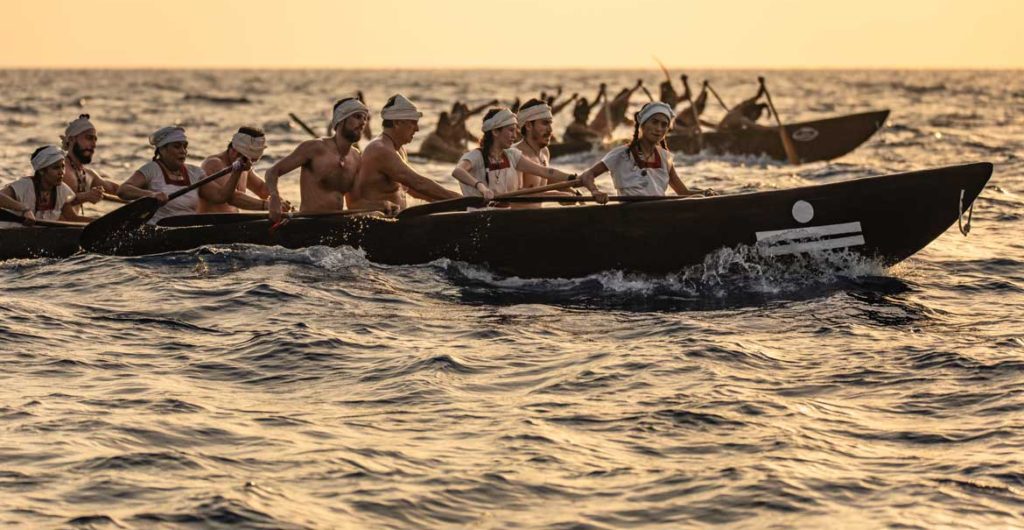
The ‘Sacred Maya Crossing’ is a yearly event that takes place in May or June. Hundreds of oarsmen and women participate in Mayan dugout canoes, paddle from the mainland to Cozumel and back. The two-day event recreates ancient ritual pilgrimages undertaken by the original inhabitants of Yucatán to Polé (Xcaret) and then on by canoe to Cuzamil (Cozumel).

The celebration begins with a pilgrimage to Xcaret. All night long, guests participate in rituals, dances and ceremonial supplications to the goddess Ix Chel, as they wait for the first rays of dawn, when they send the canoes off to Cozumel.
For the Maya, this journey was a mystical undertaking in which they were profoundly affected by their intimate contact with the forces of nature.

Coming from the Xicalango region, in Tabasco, the Puton or Chontal Maya groups extended their influence throughout the coasts of the Yucatan Peninsula. These groups were the “Itzaes”, of Toltec origin, whom the eminent Mayanist Eric S. Thompson called “the Phoenicians of the new world”.
The Itzaes, bearers of a maritime culture, established commercial colonies and sea routes from Tabasco to Belize, Honduras and Panama. The development of these routes led to the establishment of coastal sites and human settlements.
This intense maritime and commercial activity allowed the exchange of a large number of products from different places, establishing different routes. The commercial activity of the postclassic Maya led to the exchange of ideas and products, which was a basic factor in cultural homogeneity, boosting their development.

At this time, pilgrimages were frequent from the eastern coast of the Yucatan (state of Quintana Roo) to the island of Cozumel, with the main purpose of venerating the goddess Ix Chel, which had its main place of worship on this island. The crossing was important because of the religious importance of the sea, as well as the sacred nature of the sea route.
The Maya considered the sea as a source of food and transportation, but at the same time it could be a source of devastation and death, since the eastern coast of the Yucatan Peninsula has always been a hurricane passage zone. On the other hand, the sea indicated for the Maya the entrance to Xibalbá, the underworld. To dare to make the sea crossing involved a great risk, a kind of experience of personal transformation, which from the religious point of view, amounted to a transition to the beyond.

The coastal places or sites from where the crossing to the island of Cozumel began were diverse, such as Xamanhá (Playa del Carmen), Polé (Xcaret), Paamul, Xaacl, Chakalal, Yalkú and Tancah. However, the most important starting point was the old port of Polé (Xcaret).

Cozumel was the fundamental site for the Postclassic commercial network (900 AD to 1550 AD). Merchants and pilgrims from all over the peninsula came here to worship Ix Chel, the Maya goddess of the moon and fertility.

The cult of Ix Chel favored not only religious and commercial aspects, but also a powerful magnet for the migration to the east coast of numerous artists and builders, which led to the introduction of new forms in ceramics, architecture and wall paintings. Because of its etymology, Ix Chel can be translated as “white complexion”, which refers to the appearance of the moon.You can rent a car in Cozumel to visit and learn about Ix Chel and the Maya ruins at San Gervasio on the island.

